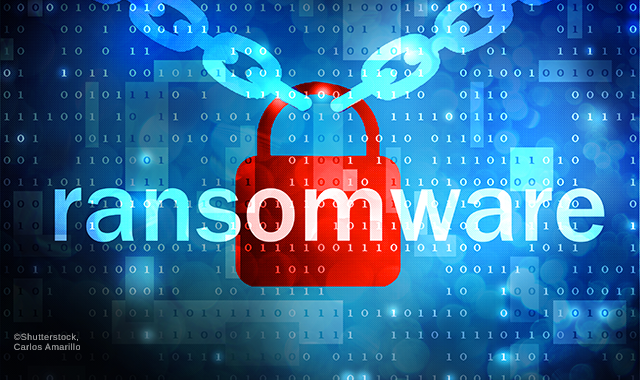4 things you need to know about the dangers of ransomware
Think you can't be a victim of a ransomware attack? Think again. Underestimating the dangers of ransomeware could have big consequences.

Is ransomware really dangerous? Yes! The average downtime from a Ransomware attack is four to six days, and the percentage of files damaged as a result of the ransom process is reported to be as much as 30 percent.
What is ransomware?
Ransomware is a type of malicious software (malware) that locks access to key files and data on your computer or server through an encryption process.
How do you know if your computer is ransomed by a cybercriminal?
You will be notified by a message on your computer screen that you are a victim of ransomware. It will display a digital clock letting you know how many hours you have to pay a ransom before your files are locked forever
The average ransom the cybercriminals demand ranges from $200 to $1,000. The ransom must be paid in Bitcoin making the transaction untraceable. The criminals claim that if you pay the amount demanded, they will send to you the encryption key to un-encrypt your files.
The F.B.I. and Homeland Security advise against paying the ransom for a number of reasons. The main reason is that there is no guarantee you will ever receive the needed encryption code.
How do I defend against ransomware?
The first step is to have a professional assessment of your network to determine where your system is vulnerable and make recommendations of ways to mitigate your chances of a ransomware attack. Things that should be assessed include:
The network firewall: It should be a business-grade firewall with an active anti-malware program that is updated regularly.
The network router: You must ensure that there are two separate Wi-Fi connections, one for guest and employee personal use and one for the office server.
The server’s anti-virus software: You must ensure that the anti-virus software is business-grade and is updated regularly.
In addition to these technical steps, it is important to educate all staff members on how to avoid camouflaged malware or ransomware that is hidden in either incoming emails or on websites.
As important as each of these steps is for strengthening your defense against a ransomware attack, nothing can completely ensure that you will not fall victim to an attack.
With 10,000 to 13,000 new variations of ransomware being developed and launched every day, it is understandable why experts agree: If you have not already been a victim of a ransomware attack, you will be.
With a ransomware attack quickly becoming a matter of “when” and not “if,” a solid recovery plan is your office’s best defense.
Continue to page two to learn the best way to recover from a ransomware attack.
How do I recover from an attack?
You have two options: Pay the ransom, hope that you receive the encryption code, deal with the days of downtime and hope that the damage to your files is minimal; or, develop and put into place a sound recovery plan (hostage plan) and don’t pay the ransom.
To put together a proper recovery plan, you will need the assistance of both your local IT professional and a professional third-party company that will assess your present system, as well as test your recovery plan once it is put into place.
Key to a sound recovery plan is the rapid availability of copies of all files and programs (not just patient data) that are presently on your office server. These files need to be current and validated regularly to ensure that when you go to use your recovery plan that you have all the patient data, images and programs that you use to run your practice.
The second portion of the recovery plan is how rapidly the valid copies of your files and programs can be put into use to run your network now that ransomware has locked you out of your server.
A professional assessment will let you know exactly how long it will take you to recover from a ransomware attack, whether you are utilizing a traditional backup system or a business continuity system. For reference, a traditional backup system’s recovery time is usually measured in days and a business continuity system’s recovery time is measured in minutes.
With the amount of ransomware having grown by more than 300 percent in 2015 and continuing to grow at an increasing pace, the time to act is now. Start with a professional assessment such as the Data Security Assessment by DDS Rescue currently offered at no-charge for a limited time.
For more information visit www.ddsrescue.com or email assessment@ddsrescue.com.